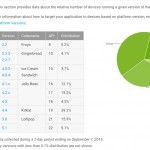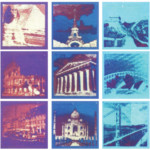NYU Accidentally Exposed Military Code-breaking Computer Project To Entire Internet
An anonymous reader writes: A confidential computer project designed to break military codes was accidentally made public by New York University engineers. An anonymous digital security researcher identified files related to the project while hunting for things on the internet that shouldn't be, The Intercept reported. He used a program called Shodan, a search engine for internet-connected devices, to locate the project. It is the product of a joint initiative by NYU's Institute for Mathematics and Advanced Supercomputing, headed by the world-renowned Chudnovsky brothers, David and Gregory, the Department of Defense, and IBM. Information on an exposed backup drive described the supercomputer, called -- WindsorGreen -- as a system capable of cracking passwords. Read more of this story at Slashdot.
Today’s Massive Ransomware Attack Was Mostly Preventable—Here’s How To Avoid It
Ransomware may be mostly thought of as a (sometimes costly) nuisance, but when it hinders the ability of doctors and nurses to help people with an emergency medical problems, that qualifies as armed robbery. Read more...
Scientists Finally Know What Makes These Weird Glass Droplets So Incredibly Strong
Something unusual happens when a drop of molten glass falls into water. As it cools, it creates a crystal clear tadpole-like droplet that’s bulletproof on one end, but impossibly fragile on the other. We’ve known about these droplets for 400 years, but scientists have only recently figured out what makes them almost… Read more...
OnLive shuts down streaming games service, sells patents to Sony
The first company to try to make a business out of streaming gameplay over the Internet will soon be shutting down its service. OnLive announced today that its servers will go offline on April 30, and that the company is selling its portfolio of patents to Sony Computer Entertainment America. The announcement comes almost exactly six years after OnLive first announced its plans in the nascent streaming gaming space. The idea was to take in user input over the Internet, put it through a game running on high-end hardware at a centralized server location, then send back video and audio to end user hardware that could be significantly cheaper and less powerful. The service and a $100 microconsole launched in late 2010 , but suffered from noticeable latency and image quality issues in our initial tests. With its pay-per-game service and a limited subscription-based streaming model failing to connect with many consumers, OnLive faced massive layoffs and a drastic business restructuring in 2012. The company soldiered on to launch a new hybrid streaming/downloadable game plan last year, though. Players who took part in that hybrid plan will still be able to play their purchased games through Steam, but streaming games purchased through Cloudlift or the older Playpass subscriptions will no longer be usable after the end of the month. OnLive will continue to exist as a corporate entity to manage remaining unsold assets such as trademarks, copyrights, and product designs. Read 4 remaining paragraphs | Comments
New ultra-high resolution printer makes colors from nanostructures
Researchers from the Technical University of Denmark demonstrated a new nanotechnology-based printing technique that produces long-lasting color images on plastic at resolutions up to 127,000 dots per inch, many times more detailed than traditional laser printers. The system uses a laser to alter the structure of nanoscale structures on the plastic material. (A nanometer is one-billionth of a meter; a human hair is around 60,000 nanometers in diameter.) The nanoprinting technique could also lead to new kinds of 3D displays or invisible watermarks. From New Scientist : The surface of the plastic is shaped so that it has lots of tiny pillars, one roughly every 200 nanometers. A thin film of the element germanium is then spread over the plastic. Heat from a laser melts the germanium on each pillar, morphing its shape and thickness. As a result, it reflects a specific color. The coating protects the shapes of the newly carved nanostructures. Resonant laser printing of structural colors on high-index dielectric metasurfaces (ScienceAdvances)
Renault And Nissan Plants Hit By Massive Ransomware Attack
French auto giant Renault became the first major French company to report being affected by Friday’s ransomware attack that affected tens of thousands of computers in almost 100 countries across the world, reports Automotive News . An English plant of Renault’s alliance partner Nissan was also hit by the attack. Read more...
Over 7,000 Bodies May Be Buried Beneath Mississippi University
In what sounds like a clichéd horror movie premise, a recent investigation suggests as many as 7, 000 bodies are buried across 20 acres at the Mississippi Medical Center Campus—the former site of the state’s first mental institution. Officials at the university now face the grim task of pulling 100-year-old bodies… Read more...
What Those Spray Paint Marks on the Street Actually Mean [Update]
Walking around your city, you might have noticed spray paint markings on the street and sidewalk. Clearly they’re there to mark something, but what? Turns out, construction workers aren’t just doodling for fun—those marks are there to protect you. Read more...
Ubuntu Arrives in the Windows Store, Suse and Fedora Are Coming To the Windows...
At its Build developer conference today, Microsoft announced that Ubuntu has arrived in the Windows Store. From a report: The company also revealed that it is working with Fedora and Suse to bring their distributions to the Windows Subsystem for Linux (WSL) in Windows 10. At the conference last year, Microsoft announced plans to bring the Bash shell to Windows. The fruits of that labor was WSL, a compatibility layer for running Linux binary executables (in ELF format) natively on Windows, which arrived with the Windows 10 Anniversary Update released in August 2016. Microsoft also partnered with Canonical to allow Ubuntu tools and utilities to run natively on top of the WSL. By bringing Ubuntu to the Windows Store, the company is now making it even easier for developers to install the tools and run Windows and Linux apps side by side. Working with other Linux firms shows that Microsoft's deal with Canonical was not a one-time affair, but rather part of a long-term investment in the Linux world. Read more of this story at Slashdot.
This Laser Printer Creates High-Res Color Images Without a Single Drop of Ink
Anyone with a color printer knows that selling replacement ink cartridges is the quickest way to become a millionaire. But what if your printer never needed a single drop of ink to produce color images at impossibly high resolutions? A new laser printer can already do that by etching microscopic patterns onto sheets… Read more...









